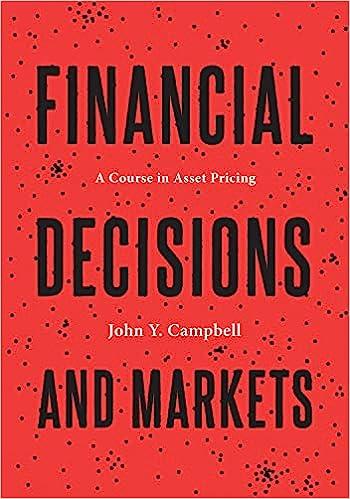Question
The average excess return of the market portfolio is 8.3%. We consider the following four assets: Fund A, Fund B, Fund C, and the riskless
The average excess return of the market portfolio is 8.3%. We consider the following four assets: Fund A, Fund B, Fund C, and the riskless asset. Fund A achieves an average excess return that is twice as large as the one of the market, with a beta that is also twice as large as the beta of the market. Fund B, instead, attains an average excess return of 10.3%. Fund C has a beta of 2.1, but it achieves an average excess return substantially higher than that of the market, and more specifically equal to 13.1%. The risk-free rate is 1%. You decide to use the CAPM as your benchmark asset pricing model. Short-selling is not allowed.
a. Under which condition can the manager of fund B be considered as a better stock selector compared to the manager of fund A, despite a lower average excess return?
b. Construct a portfolio P that includes only fund C and one of the other assets (Fund A, Fund B or the riskless asset), in such a way that the beta of portfolio P is equal to the beta of the market. If you use the beta as your risk measure, does portfolio P have a higher risk-adjusted performance with respect to the market? Give also a graphical representation that
corroborates your answer.
Step by Step Solution
There are 3 Steps involved in it
Step: 1

Get Instant Access to Expert-Tailored Solutions
See step-by-step solutions with expert insights and AI powered tools for academic success
Step: 2

Step: 3

Ace Your Homework with AI
Get the answers you need in no time with our AI-driven, step-by-step assistance
Get Started


